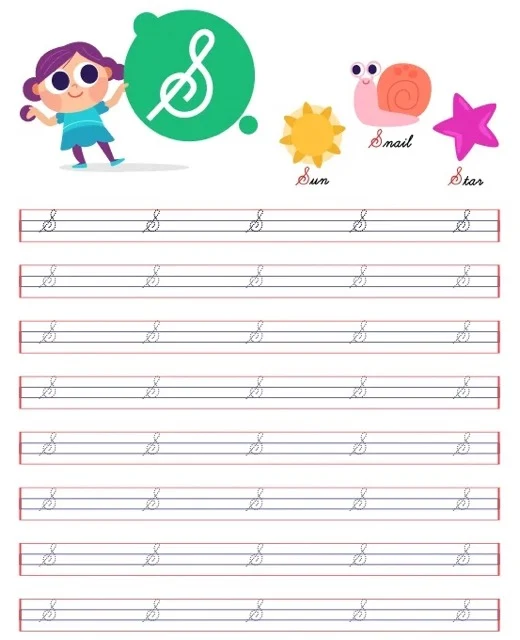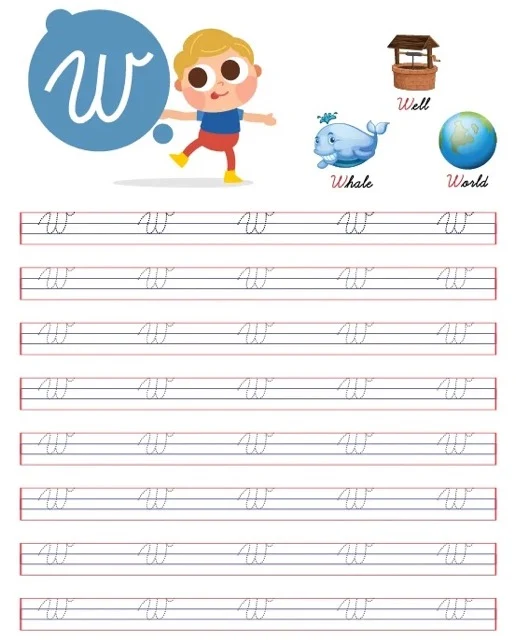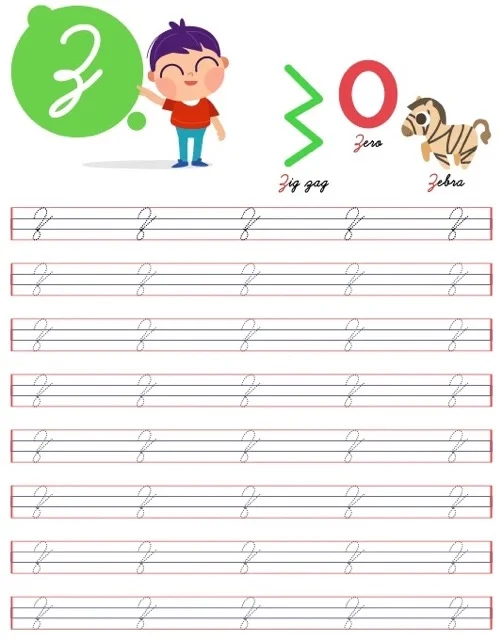Cursive Writing Worksheets for Kids
Three sources detail printable worksheets designed to teach children capital cursive letters. These resources, including worksheets, a study guide, and visual examples, emphasize the pedagogical aspects of cursive writing instruction, highlighting benefits like improved handwriting and fine motor skills. The worksheets feature large letter examples, tracing lines, and visual aids for guided and independent practice. The overall aim is to provide educators and parents with effective tools for teaching cursive writing to children.
Capital Cursive Letter Resources
Briefing Doc: Capital Cursive Letter Resources Review
This document reviews three sources related to teaching capital cursive letters:
1.
Capital Cursive Letter Worksheets (Excerpts): This source presents the features and benefits of printable worksheets designed for teaching capital cursive letters.
2.
Capital Cursive Writing Study Guide (Excerpts): This source offers a quiz and essay questions based on the Capital Cursive Letter Worksheets, further exploring the pedagogical aspects of cursive writing instruction.
3.
Testing Theme: Capital Cursive letters.pdf (Visual Excerpts): This source provides visual examples of the actual worksheets, showcasing their layout, design, and the use of visual aids.
Main Themes:
●
Cursive Writing Pedagogy: The sources focus on the practical aspects of teaching cursive writing, including target audience, materials, and teaching strategies.
●
Benefits of Cursive Writing: Both textual sources emphasize the benefits of cursive writing for children, including improved handwriting, fine motor skill development, and potential cognitive benefits related to reading and writing.
●
Worksheet Design and Features: The excerpts highlight the structure and features of the worksheets, including large letter examples, tracing lines, blank lines, and engaging visual aids.
Key Ideas/Facts:
●
Target Audience: The primary audience for these resources is educators, parents, and anyone working with children learning cursive writing.
●
Worksheet Structure: Each worksheet focuses on a single capital letter, providing:
○
Large letter examples: Demonstrating correct letter formation ("Shows the correct formation of the letter.")
○
Tracing lines: Allowing repeated practice of letter formation.
○
Blank lines: For independent practice.
○
Visual aids: Colorful illustrations and thematic words to enhance engagement ("Colorful illustrations and thematic words starting with the featured letter to enhance engagement and learning.").
●
Teaching Strategies: The sources suggest using the worksheets for:
○
Guided practice: Adults supporting children through tracing and writing.
○
Independent practice: Children working autonomously after initial guidance.
○
Assessment: Tracking children's progress in cursive writing.
●
Benefits of Cursive Writing:
○
Improved handwriting: "Cursive writing can help children develop smoother and more legible handwriting."
○
Enhanced fine motor skills: "The flowing movements required for cursive writing help develop fine motor skills."
○
Potential cognitive benefits: Some research suggests a link between cursive writing and improved reading and writing skills.
●
Visual Analysis: The visual excerpts confirm the use of colorful illustrations depicting children, objects, and words related to the featured letter, supporting the textual descriptions of the worksheets' visual appeal.
Quotes:
●
"This resource is a collection of printable worksheets designed to help children learn how to write capital cursive letters."
●
"The worksheets can be used for guided practice with adult support, independent practice after initial instruction, and assessment of a child's progress."
●
"Learning cursive writing can improve children's handwriting fluency and legibility."
●
"The visual excerpts from "Testing Theme: Capital Cursive letters.pdf" use colorful illustrations of children, objects, and words starting with the featured letter to enhance learning."
Limitations:
●
The excerpts do not confirm the inclusion of lowercase letter worksheets, although this is implied.
●
The effectiveness of these specific worksheets is not explicitly evaluated in the provided excerpts.
Overall Conclusion:
The sources provide a cohesive overview of the purpose, design, and potential benefits of "Capital Cursive Letter Worksheets." The combination of textual descriptions, teaching suggestions, and visual examples offers a clear understanding of how these resources can be used to support cursive writing instruction.
Capital Cursive Letter Worksheets
Capital Cursive Letters FAQ
What is this resource?
This resource is a collection of printable worksheets designed to help children learn how to write capital cursive letters.
Who is this resource for?
This resource is intended for educators, parents, or anyone working with children who are learning cursive writing.
What does each page include?
Each page focuses on a single capital cursive letter and provides:
●
Large letter examples: Shows the correct formation of the letter.
●
Tracing lines: Allows children to practice tracing the letter multiple times.
●
Blank lines: Provides space for independent practice of writing the letter.
●
Visual aids: Colorful illustrations and thematic words starting with the featured letter to enhance engagement and learning.
How can these worksheets be used?
●
Guided practice: Adults can guide children through tracing and writing the letters.
●
Independent practice: Children can work independently on tracing and writing after initial guidance.
●
Assessment: The worksheets can be used to assess a child's progress in learning cursive writing.
●
Fun activity: The colorful illustrations and themes make learning cursive writing more enjoyable.
What is the benefit of learning cursive writing?
Learning cursive writing has several benefits for children:
●
Improved handwriting: Cursive writing can help children develop smoother and more legible handwriting.
●
Enhanced fine motor skills: The flowing movements required for cursive writing help develop fine motor skills.
●
Better reading and writing skills: Some studies suggest that learning cursive writing can improve reading and writing skills.
●
Creativity and self-expression: Cursive writing can be a creative outlet for children.
Are there worksheets for lowercase letters too?
The provided excerpts only showcase capital letter worksheets. It's likely the complete resource includes lowercase letters as well, but that can't be confirmed without access to the full document.
What age is appropriate for starting cursive writing?
Children typically begin learning cursive writing around the second or third grade, but the appropriate age can vary depending on the individual child's development and readiness.
Are there additional resources available to support cursive writing practice?
Yes, many additional resources are available, such as:
●
Cursive writing workbooks: Provide comprehensive instruction and practice.
●
Online cursive writing games and activities: Offer an interactive and engaging way to learn.
●
Educational apps: Provide tracing and writing exercises for cursive letters.
Capital Cursive Writing Study Guide
Capital Cursive Writing Study Guide
Quiz
Instructions: Answer the following questions in 2-3 sentences each.
1.
What is the primary purpose of "Capital Cursive Letter Worksheets"?
2.
Who are the intended users of this resource?
3.
Describe the key elements included on each worksheet page.
4.
Explain three ways these worksheets can be utilized in educational settings.
5.
What are two benefits of learning cursive writing for children?
6.
Do the provided excerpts confirm the inclusion of lowercase letter worksheets? Explain.
7.
At what grade level do children typically begin learning cursive writing?
8.
List two additional resources that can support cursive writing practice.
9.
Based on the visual excerpts from "Testing Theme: Capital Cursive letters.pdf," what visual aids are used to enhance learning?
10.
How do the excerpts from "Testing Theme: Capital Cursive letters.pdf" demonstrate the inclusion of tracing lines and blank lines for practice?
Answer Key
1.
The primary purpose of "Capital Cursive Letter Worksheets" is to provide a tool for teaching children how to write capital cursive letters. The worksheets offer a structured approach to learning letter formation through tracing and independent practice.
2.
The intended users of this resource are educators, parents, or anyone working with children learning cursive writing. This suggests a broad audience seeking to support children's handwriting development.
3.
Each worksheet page includes large letter examples for proper formation, tracing lines for guided practice, blank lines for independent writing, and visual aids like illustrations and thematic words to enhance engagement.
4.
These worksheets can be used for guided practice with adult support, independent practice after initial instruction, and assessment of a child's progress. They can also be presented as a fun activity due to the colorful illustrations and engaging themes.
5.
Learning cursive writing can improve children's handwriting fluency and legibility. Additionally, it enhances fine motor skills development through the flowing movements required for cursive script.
6.
No, the provided excerpts do not confirm the inclusion of lowercase letter worksheets. While it is likely that a complete resource would include lowercase letters, the given information only focuses on capital letters.
7.
Children typically begin learning cursive writing around the second or third grade. However, the appropriate age can vary based on individual development and readiness.
8.
Additional resources that can support cursive writing practice include cursive writing workbooks for comprehensive instruction and online cursive writing games and activities for interactive learning experiences.
9.
The visual excerpts from "Testing Theme: Capital Cursive letters.pdf" use colorful illustrations of children, objects, and words starting with the featured letter to enhance learning. These visuals provide context and make the learning process more engaging.
10.
The excerpts from "Testing Theme: Capital Cursive letters.pdf" clearly show rows of lines with a dotted cursive letter for tracing, followed by blank lines for independent practice of the letter. This visual layout reinforces the progression from guided to independent writing.
Essay Questions
1.
Discuss the potential benefits and drawbacks of teaching cursive writing in the digital age.
2.
Analyze the role of visual aids in enhancing the learning process, specifically in the context of cursive writing instruction.
3.
Compare and contrast the use of traditional worksheets versus digital tools for practicing cursive writing.
4.
Evaluate the importance of individualizing cursive writing instruction based on a child's developmental stage and learning style.
5.
Considering the various resources available, propose a comprehensive approach to teaching cursive writing that integrates engaging activities and effective assessment strategies.
Glossary of Key Terms
●
Cursive Writing: A style of handwriting where letters are connected in a flowing manner.
●
Fine Motor Skills: The coordination of small muscles, typically involving the hands and fingers.
●
Guided Practice: Instruction where a teacher or adult provides direct support and feedback during the learning process.
●
Independent Practice: The stage of learning where a student works autonomously to reinforce skills and concepts.
●
Assessment: The process of evaluating a student's understanding and progress in a specific subject area.
●
Visual Aids: Educational tools that use images, illustrations, or other visual elements to enhance learning.
●
Tracing: The act of copying a letter or shape by following a pre-existing outline.
●
Thematic Words: Words related to a specific theme or topic, used to provide context and relevance to the learning material.
●
Workbooks: Educational books that provide structured instruction, practice exercises, and activities on a specific subject.
●
Digital Tools: Electronic resources, such as apps, software, and websites, used to facilitate learning.

























